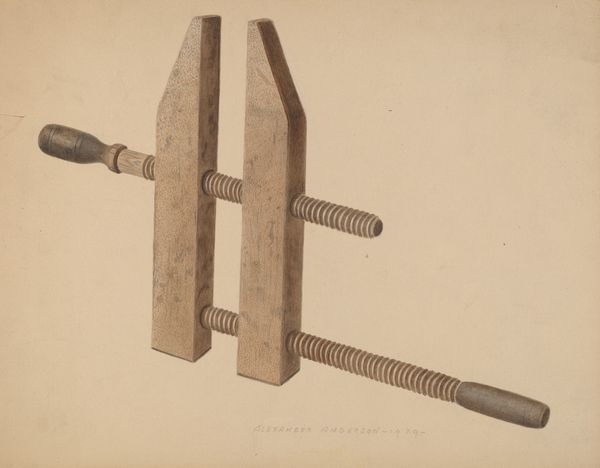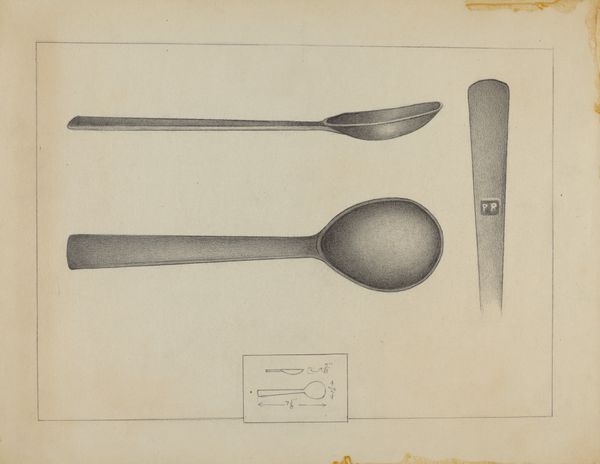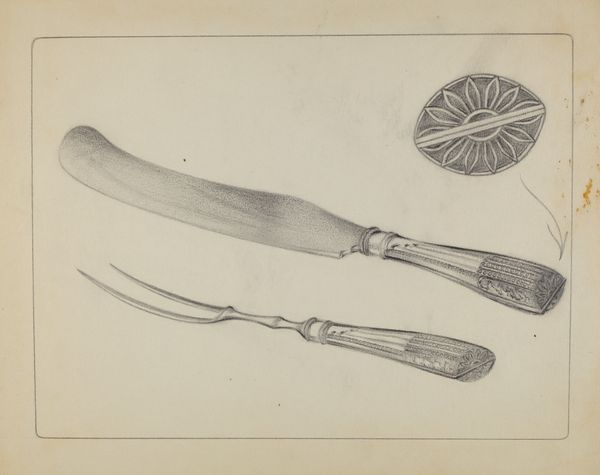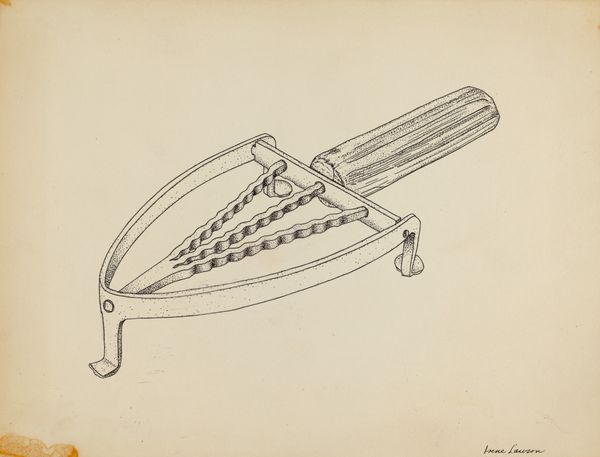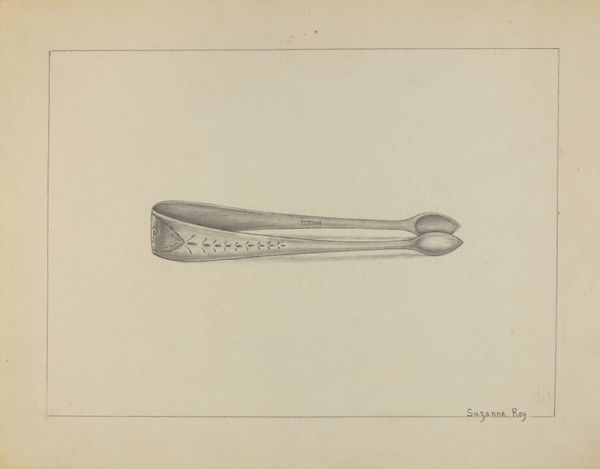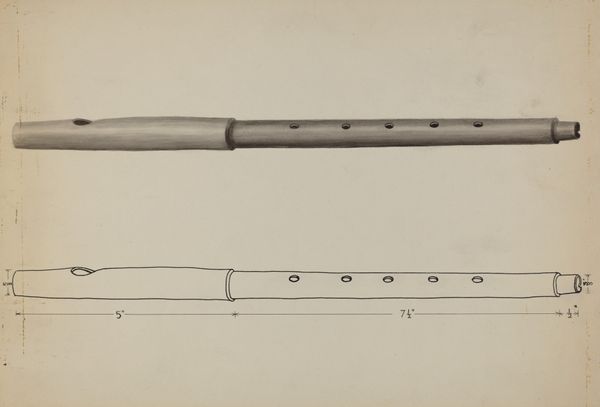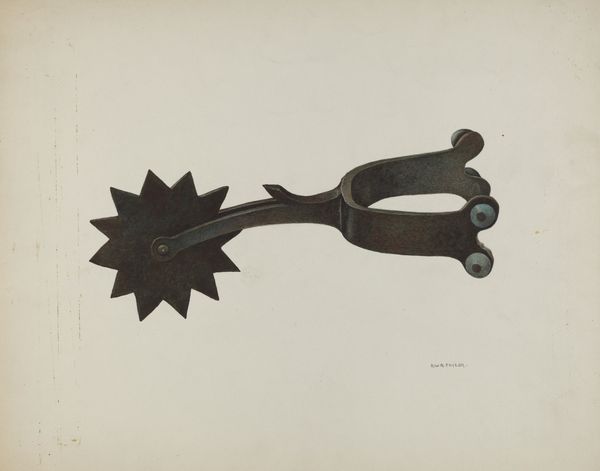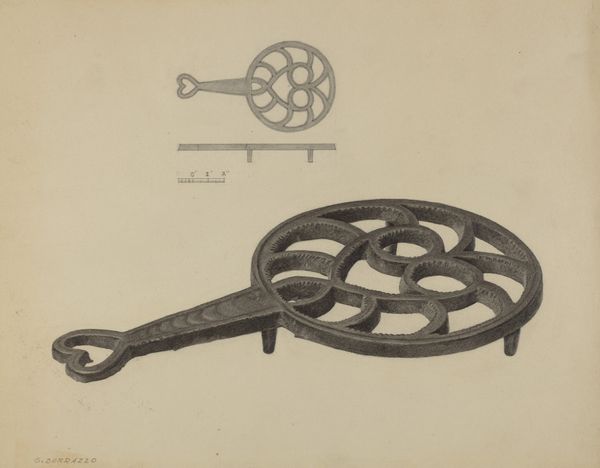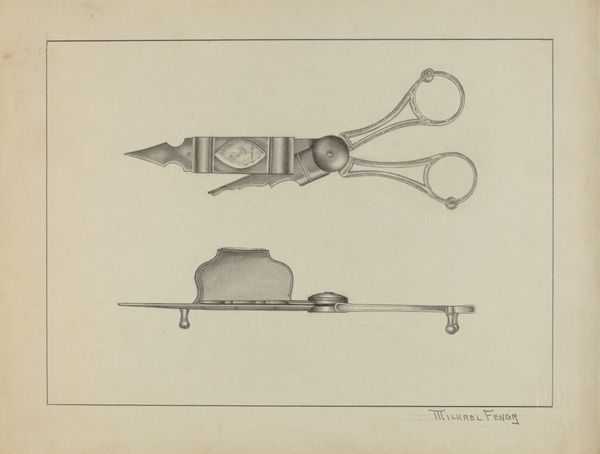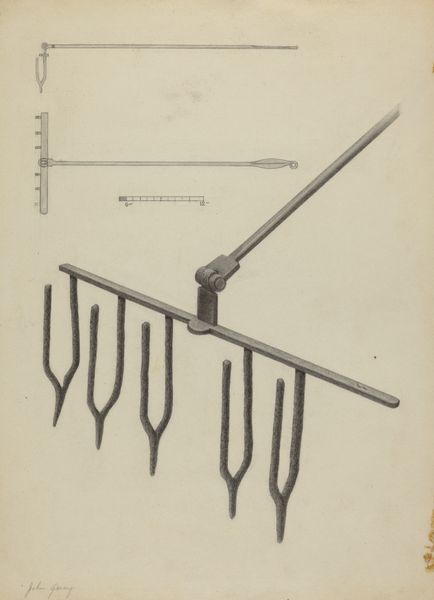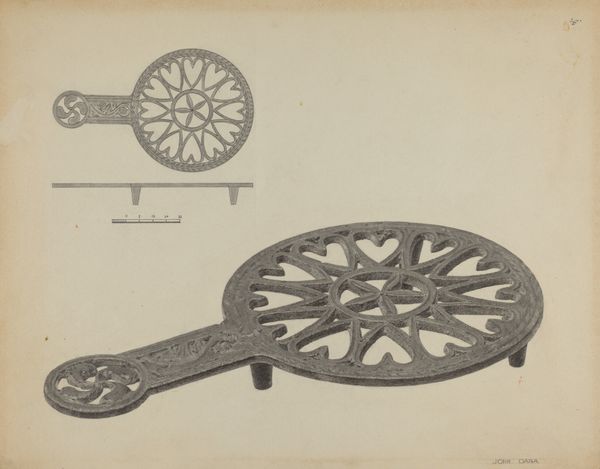
drawing, graphite
#
drawing
#
pencil drawing
#
graphite
Dimensions: overall: 22.7 x 29 cm (8 15/16 x 11 7/16 in.)
Copyright: National Gallery of Art: CC0 1.0
Editor: Here we have Filippo Porreca's "Egg Roaster" from around 1937, a graphite drawing of... well, an egg roaster. It has this stark, utilitarian feel. What strikes you about this piece? Curator: Immediately, the drawing's deliberate, almost diagrammatic quality grabs my attention. The object itself, a tool for such a primal act as cooking, becomes elevated. But let's consider what "egg" can represent: potential, life, nourishment. Doesn't the artist then transform this mundane object into something of a talisman? Editor: Talisman is an interesting way to look at it. It seems almost clinical, like an illustration from an instruction manual. Curator: True, there is a precision, but within that precision lies intent. The repetition of the egg cups suggests ritual, and rituals reinforce beliefs. I'm interested in what Porreca intended to preserve – what did eggs, cooking, sustenance symbolize to him? Editor: So you're saying even in its simplicity, it still tells us a story about value? About, like, what gives people comfort and what's meaningful to them? Curator: Precisely! Even a functional drawing becomes charged. Think about other images involving eggs you've seen throughout time—religious paintings of creation, advertising... it resonates, no? Editor: Wow, now I’m thinking about eggs and fertility symbols… totally different perspective than when I started. Curator: And that’s the beauty of iconography; to appreciate visual languages' depth even in unexpected forms! It seems everyday at first, but reveals layers with closer consideration. Editor: I'll definitely be looking at everyday objects differently now, searching for those deeper cultural threads!
Comments
No comments
Be the first to comment and join the conversation on the ultimate creative platform.

